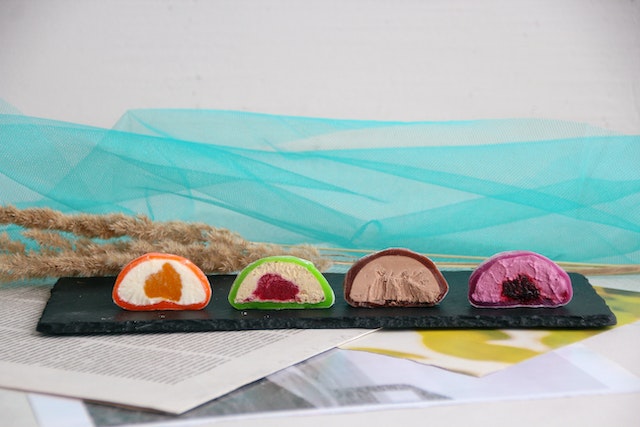
Exploring the vibrant world of Asian plant-based cuisine, we cannot miss an array of popular rice cakes. Delighting palates with their diverse textures and tantalizing flavors, rice cakes have become a beloved staple in Asian plant-based cuisine. These delectable treats offer a world of culinary possibilities, showcasing the creativity and versatility of plant-based cooking. Today, we embark on a journey through a selection of popular rice cakes that have captured the hearts and taste buds of food enthusiasts across the Asia continent.
Taiwanese Rice Cake
Taiwanese Rice Cakes are typically made from glutinous rice, also known as sticky rice. The rice is soaked, ground into a paste, and mixed with water to create a thick batter. Traditional versions of Taiwanese Rice Cake are often plain or lightly sweetened. However, modern variations can incorporate various flavors such as sesame, peanuts, red bean, or taro, giving them a delightful taste and texture.
Hong Kong Style New Year Cake
The main ingredients of Hong Kong New Year Cake include glutinous rice flour, brown sugar, and water. Hong Kong New Year Cake, also known as “Nin Gou” in Cantonese, holds great cultural significance and is a beloved traditional delicacy enjoyed during the Chinese New Year celebrations in Hong Kong. It is a sweet and sticky rice cake that symbolizes good luck, prosperity, and the hope for a better year ahead. Hong Kong New Year Cake has a soft and chewy texture with a sticky consistency. The brown sugar imparts a rich, caramel-like flavor to the cake, adding a hint of sweetness.
Korean Tteok
First on our delectable list is the renowned Korean tteok, a culinary treasure brimming with charm. These chewy rice cakes, available in a myriad of shapes and sizes, lend themselves beautifully to an array of plant-based creations. From the iconic spicy tteokbokki to comforting tteokguk (rice cake soup), the versatility of Korean tteok brings joy to both traditional and modern Korean plant-based cuisine.
Thai Khao Tom Mat
Our exploration would be incomplete without indulging in the unique Thai khao tom mat. These dainty cylindrical rice cakes, gently infused with coconut milk and a touch of sweetness, epitomize the elegance of Thai plant-based fare. With their soft and delicate texture, khao tom mat tantalize the senses, be it as a standalone treat or as a delightful addition to Thai desserts.
Indonesian Kue Lumpur
Venturing further, we uncover the hidden gem of Indonesian vegan cuisine—the kue lumpur. These luscious rice cakes, often filled with sweetened mung bean paste, are a delight to behold and savor. With their decadent flavor and velvety texture, kue lumpur serve as a testament to the rich tapestry of plant-based delights found in Indonesian culinary traditions.
Chinese Nian Gao
China also has a type of rice cake, namely Chinese nian gao, which is a delicacy adored during festive occasions. Made from glutinous rice flour, these soft and sweet rice cakes harmonize beautifully with the vegan culinary landscape. Whether enjoyed in its classic form, steamed and pan-fried, or incorporated into stir-fries, nian gao is a great ingredient to the variety of Chinese plant-based cuisine.
Japanese Mochi
Last but certainly not least, we pay homage to the cherished Japanese mochi. These delightful glutinous rice cakes, soft and chewy, have become an emblem of Japanese plant-based cuisine. From traditional wagashi to modern fusion creations, mochi lends itself seamlessly to a myriad of plant-based interpretations. Be it filled with sweet red bean paste or paired with fresh fruit, mochi continues to captivate the discerning palates of epicureans worldwide.
The diverse and tantalizing array of rice cakes present in Asian plant-based cuisine. Each culinary tradition offers its own unique take, bringing happiness to vegans and vegetarian alike. Whether savoring the chewy delights of Korean tteok, the sweet elegance of Hong Kong style new year cake, the delicate grace of Thai khao tom mat, the indulgence of Indonesian kue lumpur, or the beloved Japanese mochi, these rice cakes are a testament to the culinary artistry that flourishes across the vibrant Asian continent.
Note: Image by Alina Matveycheva




